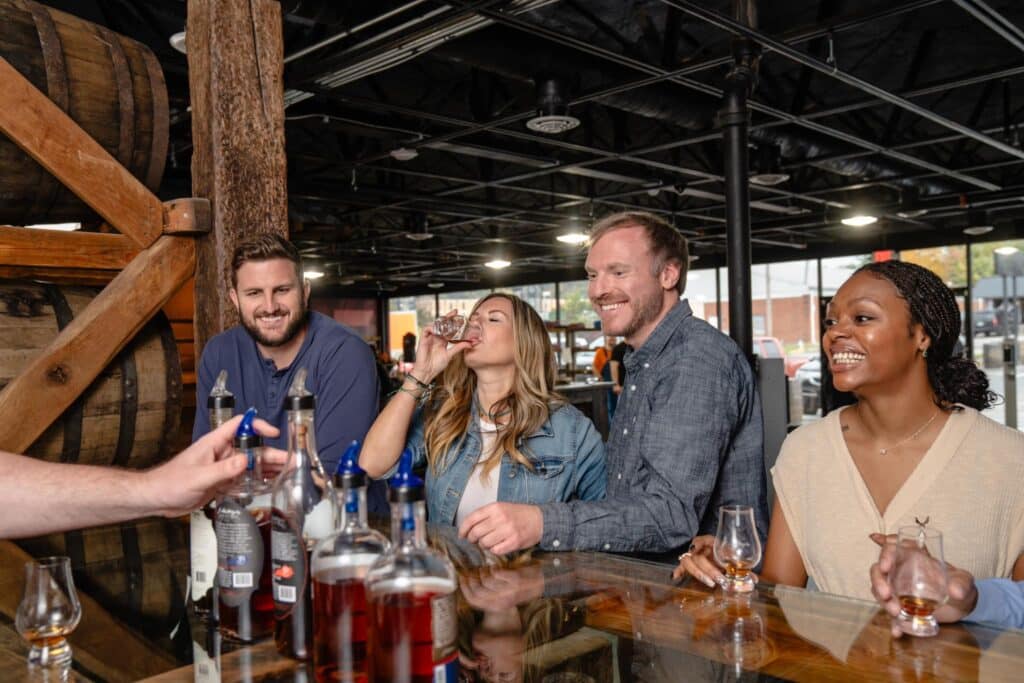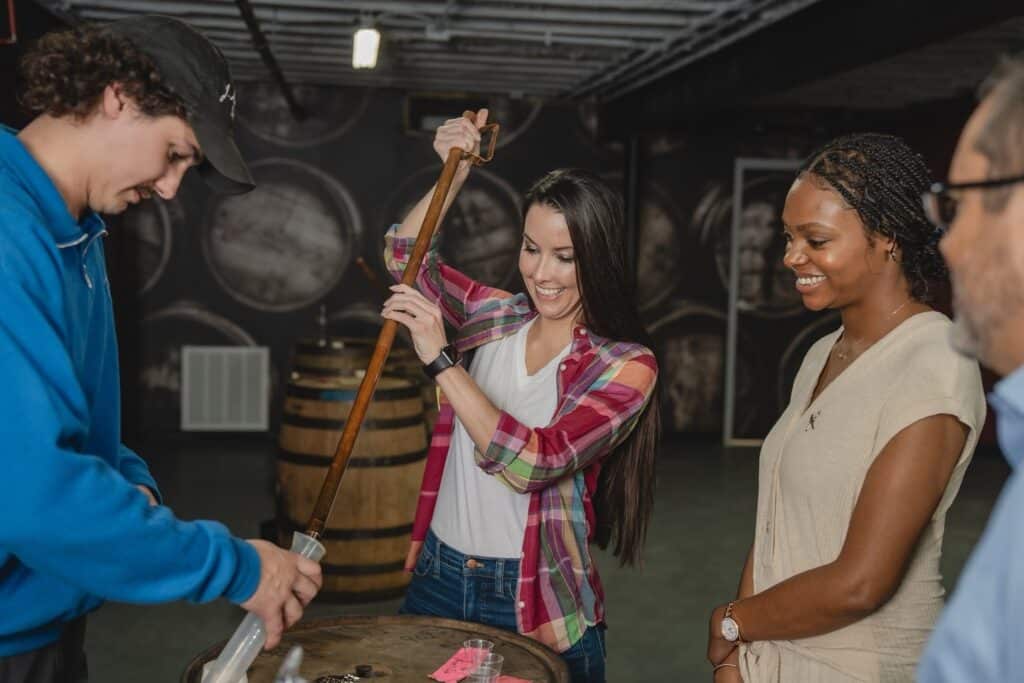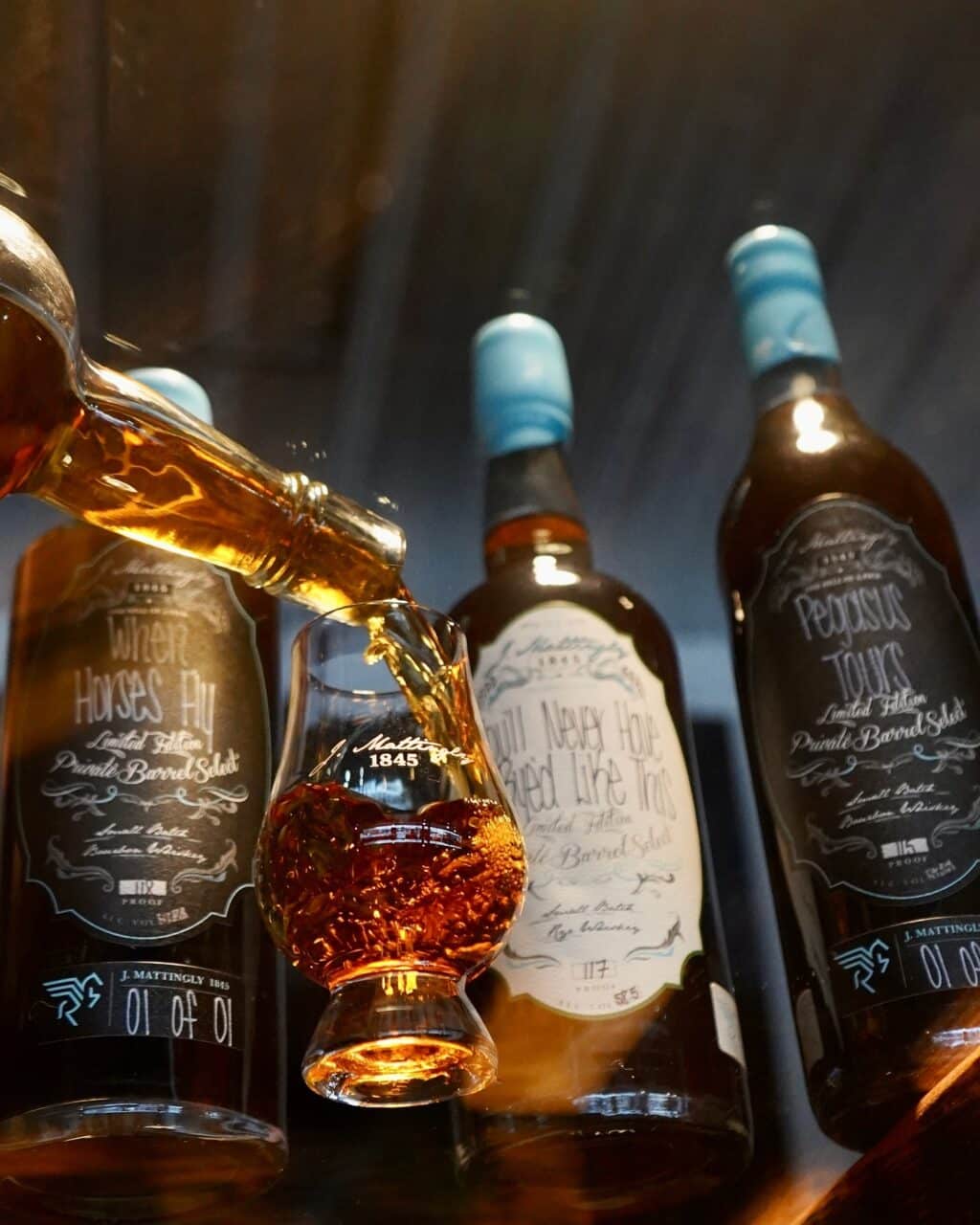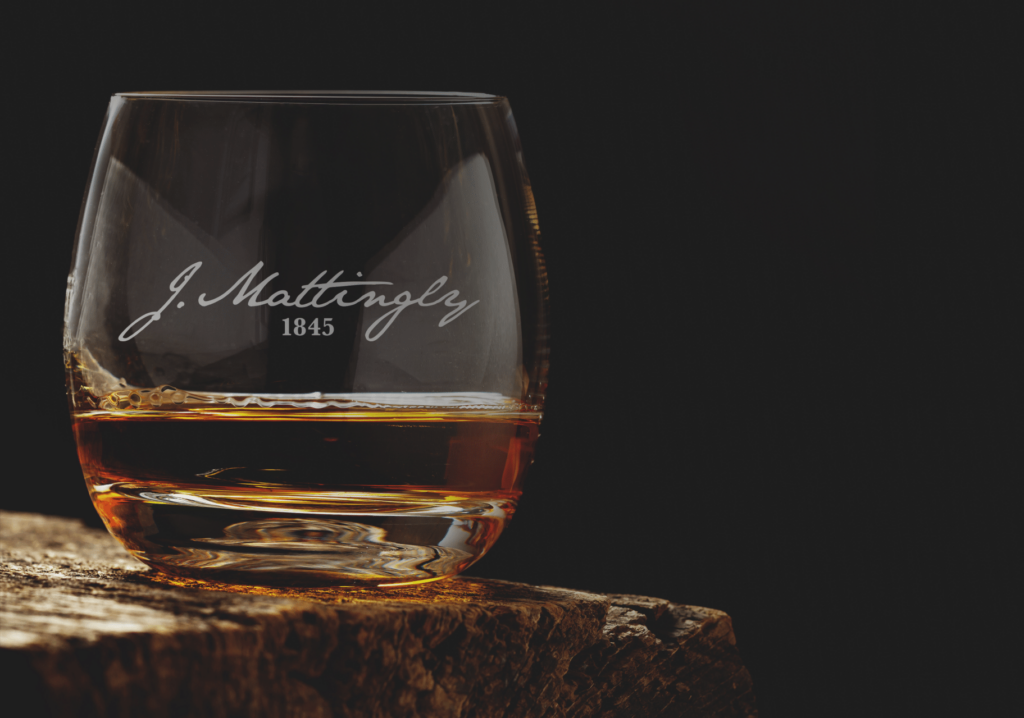In any discussion of bourbon there are some names that cannot be overlooked: Elijah Craig, often referred to as “the father of the bourbon industry,” E.H. Taylor, Albert Blanton, Elmer T. Lee, Pappy Van Winkle, and the list goes on. Their place in the industry is the stuff of legends.
To the list, you should add John Graves Mattingly. His name may not be as immediately recognizable outside the bourbon industry as the others, but in 1845, J.G. Mattingly opened the second registered distillery in Kentucky in Marion County, eventually moving it to Louisville. Today, some bourbon historians make the case that it was Mattingly, and not Evan Williams, that was the first to be registered.
For the next 200 years, the name Mattingly was intertwined with that of Kentucky bourbon. It was Mattingly who was one of the first to use column stills which greatly enhances continuous production of bourbon.
Mattingly sold barrels to George Garvin Brown, who went on to found Brown-Forman, and it was a Mattingly (Margie) who became a Samuels when she married into another bourbon dynasty. All in all, Mattingly had ties with at least nine other Kentucky distilleries.
Fast forward to November 1, 2023. Jeff Mattingly, the great-great-great-great-great nephew of J.G., who had previously operated Bourbon 30 in Georgetown, cut the ribbon on a 23,000-square-foot space in Frankfort.

J. Mattingly 1845 Distillery became the fifth distillery to open in the Capital City.
The new location provides a stunning juxtaposition of the old and the new – industrial chic meets farmhouse rustic. The exterior glass walls, for example, are a study in contrast with the interior walls made of reclaimed wood from an 1800s rick house.
While the architectural design has its own merits, it’s what is happening inside the distillery that is the real story. For J. Mattingly is one of the few distilleries in Kentucky that allow visitors to blend their own bourbon, a practice that Jeff initiated at Bourbon 30.
Head whiskey blender Aaron Mullally describes what the visitor can expect.
“First, he or she selects one of our stations – with each station having four single barrels,” he says.
Each guest is provided with a clipboard for taking notes and is guided through a tasting of each single barrel.
“Taste is highly individual,” explains Mullally, “so I never try to tell a person what he/she is tasting. I want them to tell me what they are tasting.”
Once they have determined what they like, Mullally says that they work with a blender to arrive at a custom blend especially for them.
“Then, all that’s left is for them to choose a name for their spirit and a method of bottling,” he says.
If all of this sounds a bit like a science experiment, it helps to know that before he joined the Mattingly team, Mullally was a professor of anatomy and physiology at Southcentral Kentucky Community and Technical College in Bowling Green.

If you’re not into blending your own spirits and prefer tasting the blends of the professionals, they have you covered in this as well.
Tastings at the distillery include six spirits – four bourbons along with a rye and an American light whiskey.
The tasting experience may be similar to that found at other distilleries, but their crafting process is vastly different.
Whereas most distilleries strive for a consistent flavor profile, “we are going for individuality and uniqueness,” explains Mullally.
Mattingly’s real maverick personality, however, is revealed in how they age their spirits.
“We call it ‘pushing the process,’ to allow the bourbon to mature earlier,” says Mullally. “Our intent is to push the flavor profile as quickly as possible to where we want it to be.”
The process they use to achieve this is where the science experiment comes in. Using 53-gallon American white oak barrels, they break each barrel down into 33 individual staves. The staves are then cut into smaller pieces which receive different levels of heat treatment.
This process allows for more oak penetration and customization in the heating methods,” says Mullally.
“Contrary to popular opinion, we don’t think it’s always advantageous to allow bourbon to age too long,” he says.

For the best experience, Mullally suggests making reservations, although they do accept walk-ins. When asked what he wants visitors to J. Mattingly Distillery to take away from their experience, Mullally says, “first, to know that anything with a J. Mattingly 1845 label will never be duplicated, and second, that at the end of the day, we are selling more than bourbon. We are selling authenticity.”
All images by J. Mattingly 1845

